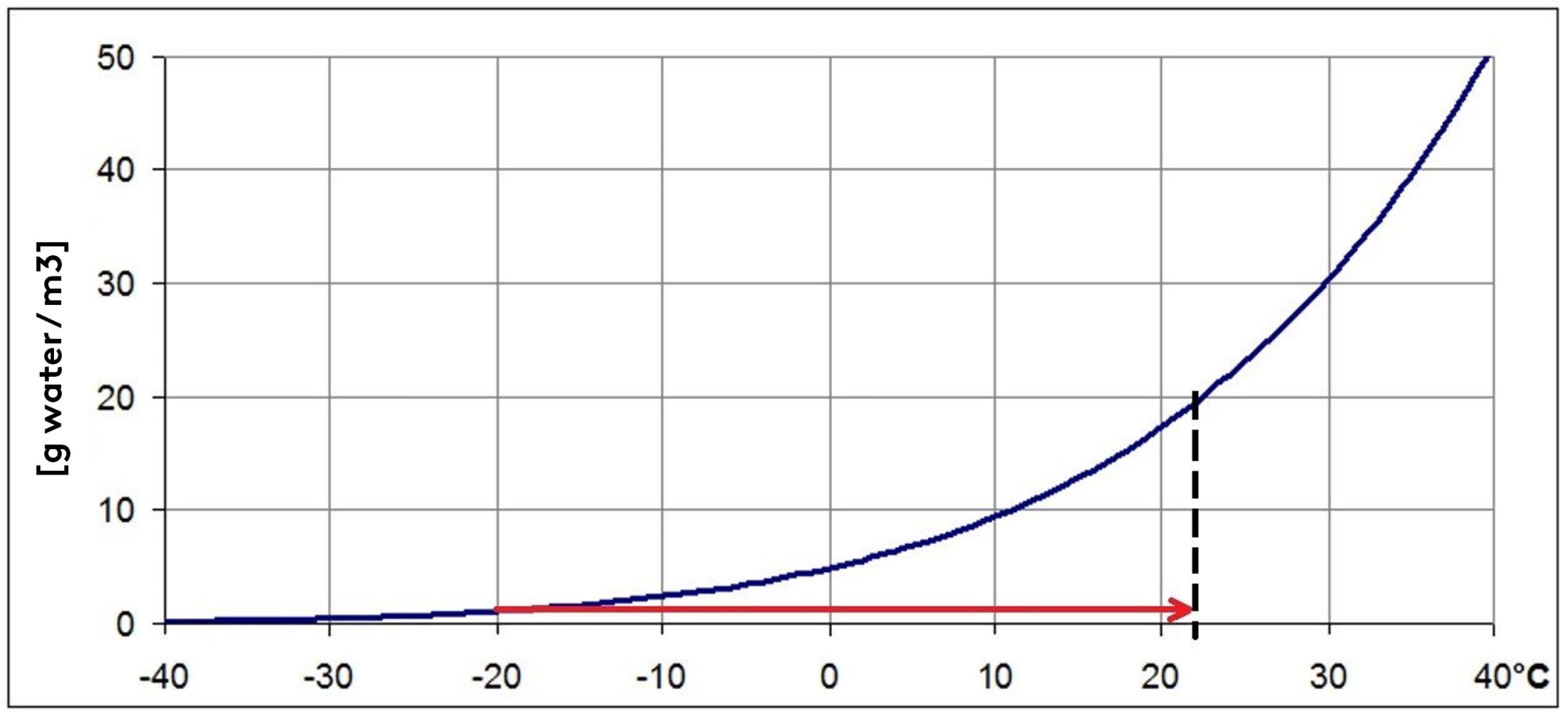If we look back to last winter we may remember that the air felt dry and the indoor climate was less comfortable. In addition to impaired indoor comfort, research shows that a dry indoor environment is also one of the causes of seasonal illnesses such as the flu.
Mikael Börjesson discusses below the reasons behind a dry indoor environment and how it affects us – as well as a few simple tips on what we can do to make the indoor climate more comfortable in the winter.
How do we notice dry air?
High humidity causes problems indoors, leading to moisture and mould damage and health problems, often caused by poor ventilation. However, in winter, when it’s cold and freezing, in many parts of the world we experience the opposite - that the indoor air feels uncomfortably dry. We notice it when our bodies start to itch, our hair feels electric, our hands and lips get chapped, our throats and eyes feel dry and we easily get an irritating cough. People with asthma, allergies or other respiratory disorders often have more trouble during the cold season, when symptoms are particularly noticeable. In addition, a dry indoor climate also affects the building, as laminate flooring cracks and parquet flooring starts to separate. What is the reason behind all of this?
The laws of nature rule - How does it work technically?
Dry air in winter is mainly due to our natural laws and the fact that cold air cannot physically contain as much moisture as warm air. In the humidity diagram below, the blue line shows the maximum "absolute humidity" of the air (g/m³), i.e. the maximum amount of moisture the air can contain at a given temperature. In simpler terms, the blue line shows when the relative humidity (RH-Relative Humidity) is 100% at different temperatures.
At approximately 95 -100% relative humidity water begins to condense out of the air in the form of mist, fog, drizzle or snow, depending on the temperature.
Mikael Börjesson discusses below the reasons behind a dry indoor environment and how it affects us – as well as a few simple tips on what we can do to make the indoor climate more comfortable in the winter.
How do we notice dry air?
High humidity causes problems indoors, leading to moisture and mould damage and health problems, often caused by poor ventilation. However, in winter, when it’s cold and freezing, in many parts of the world we experience the opposite - that the indoor air feels uncomfortably dry. We notice it when our bodies start to itch, our hair feels electric, our hands and lips get chapped, our throats and eyes feel dry and we easily get an irritating cough. People with asthma, allergies or other respiratory disorders often have more trouble during the cold season, when symptoms are particularly noticeable. In addition, a dry indoor climate also affects the building, as laminate flooring cracks and parquet flooring starts to separate. What is the reason behind all of this?
The laws of nature rule - How does it work technically?
Dry air in winter is mainly due to our natural laws and the fact that cold air cannot physically contain as much moisture as warm air. In the humidity diagram below, the blue line shows the maximum "absolute humidity" of the air (g/m³), i.e. the maximum amount of moisture the air can contain at a given temperature. In simpler terms, the blue line shows when the relative humidity (RH-Relative Humidity) is 100% at different temperatures.

At approximately 95 -100% relative humidity water begins to condense out of the air in the form of mist, fog, drizzle or snow, depending on the temperature.
Example: At minus 20 °C, the air’s absolute humidity at most is approximately 1 gram moisture per cubic meter of air. If the air is heated to 22 °C (Red arrow), the air can contain 15 times more moisture without condensation, i.e. a maximum of about 20 g/m³ of water. However, since no moisture is added during the increase in temperature, the relative humidity (RH) will instead drop from RH = 100% to only about RH = 7-8%. This means that cold air dries when it is heated and we often experience a poor indoor climate in winter.
The humidity diagram shows the maximum moisture content of the air at different temperatures, also called Maximum Absolute Humidity.
The impact of humidity on indoor climate and health
In homes, but also in other premises such as offices and schools, the relative humidity is often 20-40%, but at times during the winter it can be as low as 10% or even lower. The recommended level is often given as between 30% and 60% depending on the season, but there is no set limit for this. At higher levels, the indoor environment can be perceived as raw, close and sticky, while lower levels can be perceived as dry and dusty, and you experience problems with static electricity and itching on the body.
What can be done to counteract dry indoor air at your workplace?
There is no one-size-fits-all solution, but it’s possible to influence the indoor climate to some extent by simple means to reduce the dryness of air in offices or other premises in winter.
• A humidifier can help to add moisture, but often only works on a room-by-room basis, this can be an option in open-plan offices and classrooms. Remember that there are different humidifiers and that some of them emit a lot of noise, so it's important to choose a model with a low noise level. All humidifiers also need some form of maintenance, such as cleaning, in order not to pose a health risk.
• Living plants increase the sense of well-being and release humidity into the environment through evaporation. The more and bigger the plants the better, also close the door to the office both when you're at work and when you go home for the evening to preserve the higher humidity level, both during the working day but also overnight. An aquarium can also be an excellent complement in common areas.
• Do you cycle to work and shower when you get there? Try hanging up your towel to dry in your office, a damp bath towel in the office can increase the humidity. A bath towel gives off 80-100 g of water per hour, which gives a quick and efficient increase with 5-10% RH in the office. Besides, the towel is ‘self-regulating’ as it gives off more moisture the drier it is indoors.

























.jpg?width=75&name=Image%20(5).jpg)








.jpg?width=75&name=magnus%20andersson_550x550%20(1).jpg)











.jpg?width=75&name=0%20(1).jpg)





-4.png?width=75&name=MicrosoftTeams-image%20(3)-4.png)















